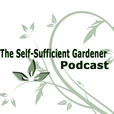
Summary: On today's show I talk about resilient gardens and just what - in my mind - constitutes a resilient garden. Furthermore, what can you do to make your garden more resilient this year? Most people who complain about pests and weeds do so because they failed to plan and to build their garden in a way that makes it resilient. Permaculture principle - Creatively use and respond to change. “Vision is not seeing things as they are but as they will be.” A resilient garden should be able to stand up to anything. There are certain devices and certain things that can be done but all in all a resilient garden has a combination of features that make it resistant or easily adaptable to change. You don’t build a garden planning for any one thing but when you add some of these features you make it ready for anything. Planning - is the key element when making a resilient garden but most people take the plan only to its best conclusion which is that I put things in at the right time and I get what I desire back out. We have to account for loss in our plan as well. So for me its always important to plant more than I think I need for redundancy’s sake. I am very clumsy so I kill some plants just through error. But you have to be a little bit paranoid and you have to see through the logical conclusions of certain actions. Something that goes along with planning is timing. Time things correctly! No matter if you are planting around pest infestations, last frost or rain with perennials. Take the time to think out what you are doing so you act at the appropriate time. Polyculture – its commonly cited as a way to prevent pest. On the Backwoods Home Radio interview I was on I spoke about how its like putting your plants in supermarket aisles. This is bad for preventing predation obviously. But also if a tree falls on your garden or part gets flooded you don’t lose all of one crop. Diversity – Goes hand in hand with polyculture but also varying plantings makes a lot of sense. But not just planting you are also drawing in wildlife. People need to gain more faith in this realm but when you allow all types of life into your garden it will balance out. You won’t have weeds or pests or anything. IT WILL ALL WORK OUT IN THE END! Insects and weeds are a good thing! Choices - Picking the right plants or livestock varieties for your needs and conditions. When there is a choice to plant something novel that is succeptible or something plain that is resistant always choose the plain thing! Its better to have guaranteed results rather than uncertain ones. Many people choose heirloom seeds because they have a history of lasting. Hybrid seeds are cool but they don’t seem to be very resistant to me (other people may have different experiences). I usually go with OP without regard for heirloom status. I know of different people trying to bring back old heirlooms and are finding out why they became near extinct in the first place. No resiliency! When you know you are going to have a problem with something work around it. I know I’m in deer and raccoon country so I can plant a ton of corn and let them eat it – or I can plant something like sunflowers. Sunflowers won’t be eaten so easily and when the doves fly in September I’ll have my shotgun out. I’m still constantly surprised by people who tell me that deer ate their corn and that they are going to try again next year. I like fences and protections but these are almost always only mostly effective. The deer only need to succeed one time and jump your fence to destroy your crop. You should build the garden plan to resist anything but especially when you are aware of things you are more succeptible too you should also focus on those areas to get good results. Involvement - A resilient garden is one that includes you and your family. Being in the garden and seeing what is going on helps you more than anything adapt to the changes coming.
